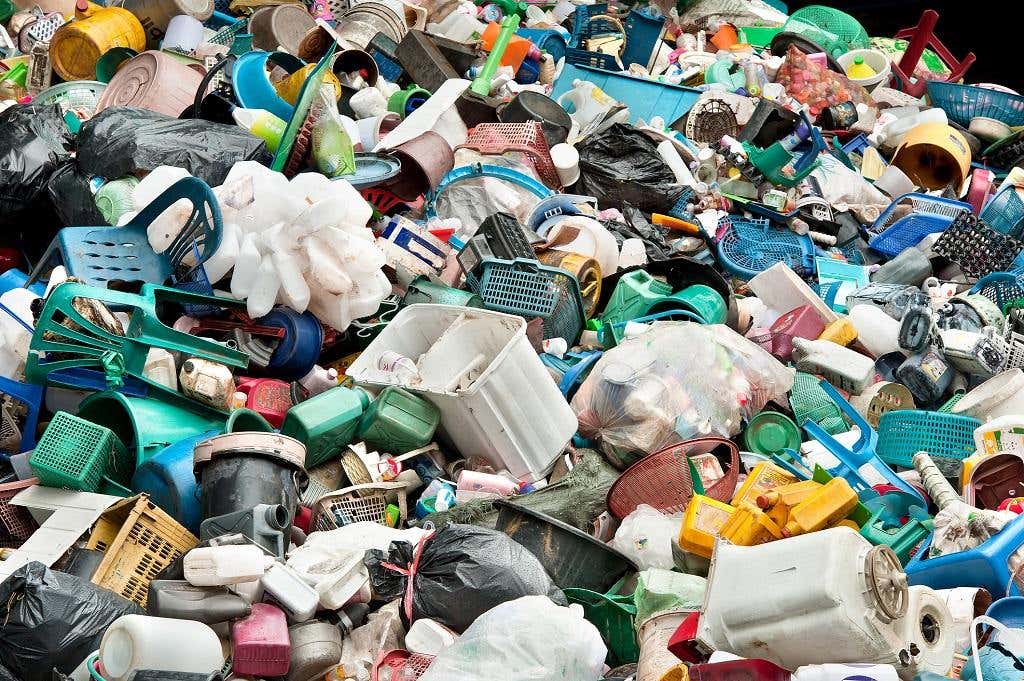Breakthrough in separating plastic waste: Machines can now distinguish 12 different types of plastic
It’s very difficult to tell the difference between different types of plastics, and this is what makes it difficult to separate and recycle.

[Jan 5, 2021: Aarhus University]
It is very difficult to tell the difference between different types of plastics, and this is what makes it difficult to separate and recycle them. (CREDIT: Getty Images)
In contrast to common perceptions, plastic is in no way near one material. Rather, it is a combination of many materials (polymers) with different chemical compounds and additives such as pigments or fibers, depending on its use. It is very difficult to tell the difference between different types of plastics, and this is what makes it difficult to separate and recycle them.
In collaboration with Vestforbrænding, Dansk Affaldsminimering Aps, and PLASTIX, researchers from the Department of Biological and Chemical Engineering at Aarhus University have now developed a new camera technology that can see the difference between 12 different types of plastics (PE, PP, PET, PS, PVC, PVDF, POM, PEEK, ABS, PMMA, PC and PA12). Together, these constitute the vast majority of household plastic types.
The technology makes it possible to separate plastics based on a purer chemical composition than is possible today, and this opens up for completely new opportunities to recycle plastics. The technology has been tested at pilot scale and is planned to be implemented at PLASTIX and Dansk Affaldsminimering Aps in spring 2022.
"With this technology, we can now see the difference between all types of consumer plastics and several high-performance plastics. We can even see the difference between plastics that consist of the same chemical building blocks, but which are structured slightly differently. We use a hyperspectral camera in the infrared area, and machine learning to analyze and categorize the type of plastic directly on the conveyor belt. The plastic can then be separated into different types. It's a breakthrough that will have a huge impact on all plastics separation," says Associate Professor Mogens Hinge, who is heading the project at Aarhus University.
Related Stories
The study has been published in the scientific journal Vibrational Spectroscopy.
Plastics are currently separated using near-infrared technology (NIR) or via density tests (floats/sinks in water). These methods can separate certain plastic fractions (for example PE, PP, and PET), but not with the same accuracy as the new technology, and therefore not with the chemical purity in the composition, and this is vital for becoming able to increase the recycling rate of waste plastic.
"The technology we've developed in collaboration with the university is nothing short of a breakthrough for our ability to recycle plastics. We look forward to installing the technology in our processing hall and starting in earnest on the long journey towards 100% utilization of waste plastic," says Hans Axel Kristensen, CEO of PLASTIX.
Plastic must be at least 96% pure by polymer type to be recycled in conventional industry. This means that the plastic has to be separated to an almost pure product in terms of chemical composition.
"Using the new technology, we are now a big step along the way," says Associate Professor Mogens Hinge, who stresses that the technology is continuously being developed and that data indicates it may be possible to differentiate even further between polymer types and additives before long.
The hyper-spectral camera technology has been developed via cross-disciplinary collaboration, including BSc and MSc engineering students and researchers at the Department of Biological and Chemical Engineering at Aarhus University as well as experts from the participating companies.
The research is part of Denmark's Re-Plast project. The project is headed by the Department of Biological and Chemical Engineering at Aarhus University. Other participants are the Department of Electrical and Computer Engineering at Aarhus University, Vestforbrænding, Dansk Affaldsminimering and PLASTIX.
For more environmental news stories check out our Green Impact section at The Brighter Side of News.
Note: Materials provided above by Aarhus University. Content may be edited for style and length.
Like these kind of feel good stories? Get the Brighter Side of News' newsletter.
Tags: #Global_Good_News, #Green_News, #New_Innovations, #Recycling, #Plastics, #Research, #Cameras, #Science, #The_Brighter_Side_of_News
Joseph Shavit
Head Science News Writer | Communicating Innovation & Discovery
Based in Los Angeles, Joseph Shavit is an accomplished science journalist, head science news writer and co-founder at The Brighter Side of News, where he translates cutting-edge discoveries into compelling stories for a broad audience. With a strong background spanning science, business, product management, media leadership, and entrepreneurship, Joseph brings a unique perspective to science communication. His expertise allows him to uncover the intersection of technological advancements and market potential, shedding light on how groundbreaking research evolves into transformative products and industries.



